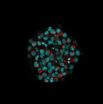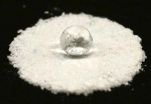(Press-News.org) Since the introduction of the combination anti-retroviral therapy (cART) in the mid-90s, the life expectancy of HIV patients has significantly improved. As a result, long-term complications are becoming more relevant: almost every second HIV patient is affected by neurocognitive disorders, which can lead to dementia. It has not as yet been fully understood how these disorders occur. Researchers from Bochum have now successfully demonstrated that infected cells activate specific immune cells in a patient's brain, which subsequently display harmful behaviour and lead to the destruction of neurons. These findings may help develop biomarkers to identify risk patients and to make a therapeutic strategy possible in the long term. The study was published in the trade journal Experimental Neurology.
Immune Cells in the Brain Under Suspicion
"HIV-associated neurocognitive disorders" (HAND) include disorders of the cognitive functions, motor capacities as well as behavioural changes. How exactly HAND occur has not, as yet, been fully understood. "Scientists assume that HIV is harmful to cells directly and that is also triggers indirect mechanisms that lead to nerve cell damage," explains Dr Simon Faissner (RUB clinic for neurology, St. Josef-Hospital). The researchers strongly suspect that, once activated in the brain and the spinal cord, immune cells keep up a chronic inflammation level which then results in the destruction of nerve cells. An immune activation in peripheral tissue as well as therapeutic consequences may likewise contribute to nerve cell damage in the brain.
First Steps of HIV Infection are Sufficient
The HI virus overcomes the blood-brain barrier hitchhiking on infected immune cells, the monocytes and probably the T cells. The researchers from Bochum tested the hypothesis that HIV-infected monocytes activate specific immune cells in the brain, the so-called microglial cells. These cells, in turn, respond by releasing harmful substances, such as reactive oxygen metabolites and inflammatory signalling molecules, i.e. cytokines. To test this hypothesis, the researchers developed a cell culture system in which they initially examined the effect of HIV-infected monocytes on microglial cells. The researchers simulated the individual steps of HIV infection and measured the volume of the cytokines released at each stage. Thus, they were able to demonstrate that releasing the viral RNA in the monocytes was a sufficient trigger for maximal microglial activation. Subsequent infection phases – reverse transcription into DNA and the resulting formation of HIV proteins – did not augment activation any further.
Released Substances Result in Neuronal Cell Death
In the second step, they analysed nerve cells from rat brains to determine if the substances released by the microglial cells could lead to cell death. Compared with the control group, the number of cell deaths was indeed twice as high. Studies of liquor cerebrospinalis received from HIV-infected patients have shown a positive correlation with marker of neuronal degeneration in patients who did not as yet present any neurocognitive disorders.
Detailed Understanding Necessary for Therapeutic Strategies
"Thanks to our research, we have gained a better understanding of the mechanisms of HIV-associated neurodegeneration," concludes Prof Dr Andrew Chan. "These results are likely to contribute to HAND biomarkers becoming established. In the long term, these data will be used to develop therapeutic strategies aiming at retarding HAND progression in HIV-infected patients." Starting points may include activation of microglial cells – a method that is applied in other autoimmune diseases of the central nervous system, for example in multiple sclerosis.
INFORMATION:
Start-up Through FoRUM Funds
The research, which was initiated following a collaboration between clinics for neurology and dermatology, St. Josef Hospital, as well as the Department for Molecular and Medical Virology, has been made possible through start-up funding provided by the Faculty of Medicine at Ruhr-Universität (FoRUM). The collaboration has evolved into an international consortium of clinics and basic research organisations in Bochum, Langen, Strasbourg and Mailand. One objective of the follow-up study, for which an application for EU funds is pending, is going to be an in-depth analysis of inflammatory processes in the central nervous system. The researchers will attempt to inhibit inflammatory processes with different drugs. They are, moreover, planning to study direct cell-cell interaction by means of state-of-the-art microscopy, in collaboration with the University of Strasbourg.
Further Information
Faissner, S. et al.: Cytoplasmic HIV-RNA in monocytes determines microglial activation and neuronal cell death in HIV-associated neurodegeneration. In: Exp Neurol. 2014 Aug 19. pii: S0014-4886(14)00263-5. doi: 10.1016/j.expneurol.2014.08.011. [Epub ahead of print],
Link to the article: http://www.ncbi.nlm.nih.gov/pubmed/25150097
Why HIV patients develop dementia
Ruhr-University Bochum researchers track harmful immune reactions in the brain
2014-09-03
ELSE PRESS RELEASES FROM THIS DATE:
A fix to our cell-phone waste problem?
2014-09-03
When it comes to cell phones, the world is stunningly wasteful. Customers will buy more than 1.8 billion new ones by the end of this year only to abandon almost half of them to drawers, and they'll recycle a mere 3 percent of them. But creative and enterprising efforts are underway to reverse the seemingly unstoppable tide, says an article in Chemical & Engineering News (C&EN), the weekly news magazine of the American Chemical Society.
Alex Scott, a senior editor at C&EN, notes that there is much to be recovered and re-used from a cell phone. An average mobile contains ...
CNIO experts discover the genomic origin of telomere protectors
2014-09-03
RNA is one of the most primitive molecules associated with life that has awakened most interest over the last decade; a sister molecule to cellular DNA from which it originates via a process called transcription. Seven years ago, the groups of María Blasco at the Spanish National Cancer Research Centre (CNIO), Spain, and Joachim Lingner in Switzerland discovered that the DNA regions that contained telomeres, despite their compact and hard-to-access structure, generated RNAs that they christened TelRNAs or TERRA.
Now, a study published in the journal Nature Communications, ...
Breakthrough for carbon nanotube solar cells
2014-09-03
Lighter, more flexible, and cheaper than conventional solar-cell materials, carbon nanotubes (CNTs) have long shown promise for photovoltaics. But research stalled when CNTs proved to be inefficient, converting far less sunlight into power than other methods.
Now a research team led by Mark Hersam, professor of materials science and engineering and the Bette and Neison Harris Chair of Teaching Excellence at Northwestern University's McCormick School of Engineering, has created a new type of CNT solar cell that is twice as efficient as its predecessors. It is also the ...
Ethanol fireplaces: The underestimated risk
2014-09-03
Go to the DIY-market in the morning, buy the fireplace, and that evening, enjoy the cozy warmth and homey atmosphere of your new ornamental hearth. The suppliers of ethanol fireplaces are doing a brisk business with the lightweight, easy-to-install ornamental stoves with no chimney. However, caution is warranted when operating these fireplaces, because ethanol is a fuel that, together with the air, forms a highly combustible atmospheric mixture. If ethanol runs out when filling the combustion chambers and it ignites, then the entire room could go up in flames.
On top ...
Fingerprints for freight items
2014-09-03
Thousands of freight items are shipped by plane every day, around seventy percent of them in airliners. Stringent controls are supposed to prevent hazardous substances such as explosives from being smuggled on board. Screening procedures, such as x-ray scanning of freight, are time consuming and costly and have to be repeated in the event of suspicious circumstances. Easily verifiable features that verify that a freight item is "secure" have been lacking until now.
Researchers at the Fraunhofer Institute for Factory Operation and Automation IFF in Magdeburg are working ...
A 'clear' choice for clearing 3-D cell cultures
2014-09-03
VIDEO:
Using a confocal microscope, researchers can study a cleared spherical 3-D tissue culture at any depth. The video begins on the near surface and exits on the far side of...
Click here for more information.
PROVIDENCE, R.I. [Brown University] — Because Brown University biomedical engineering graduate student Molly Boutin needed to study how neural tissues grow from stem cells, she wanted to grow not just a cell culture, but a sphere-shaped one. Cells grow and interact ...
Parrots go to carpentry school
2014-09-03
This news release is available in German.
Scientists from Oxford University, the University of Vienna, and the Max Planck Institute at Seewiesen have shown that a spontaneous innovation by a Goffin's cockatoo can spread to other conspecifics by social learning.
After observing that an adult male Goffin cockatoo named Figaro spontaneously started to sculpt stick tools out of wooden aviary beams and used them for raking in nuts behind grit, the researchers wondered what effect, if any, such an individual technical invention might have on social companions. They used ...
Grooving crystal surfaces repel water
2014-09-03
Researchers from Kyoto University in Japan have developed a novel way to waterproof new functionalized materials involved in gas storage and separation by adding exterior surface grooves. Their study, published in the journal Angewandte Chemie, provides a blueprint for researchers to build similar materials involved in industrial applications, such as high performance gas separation and energy storage.
The materials, also known as porous coordination polymers (PCPs), are hollow nanoscale cage-like structures with the ability to house molecules within their empty ...
New discovery could help turn antibiotic into antimalarial drug
2014-09-03
Melbourne researchers are making progress towards new antimalarial drugs, after revealing how an antibiotic called emetine blocks the molecular machinery that produces the proteins required for malaria parasite survival.
Although emetine is effective against malaria it is not used as a preventive drug due to its significant side effects. However, the work of Walter and Eliza Hall Institute researchers Dr Wilson Wong, Dr Jake Baum and colleagues in showing how emetine attaches to and blocks the molecular machinery that makes the proteins required for malaria parasite survival ...
Sensory reinnervation of muscle spindles after TN defect repaired by autologous vein graft
2014-09-03
After complete transection of a nerve, good neuroanastomosis is needed to prevent the formation of fibrous connective tissues that form obstacles to nerve regeneration, and to facilitate repair of the injured nerve and reinnervation of its original targets. Peripheral nerve defects of more than 10 mm are commonly treated in clinics, and in these injuries a conduit is needed to bridge the gap, prevent the formation of obstacles to nerve regeneration, and guide axonal regrowth. Autogenous vein grafts have been used extensively for the repair of nerve defects in rats. Motor ...
LAST 30 PRESS RELEASES:
Anxiety and insomnia may lower natural killer cell count, potentially repressing immune function
How parasitic, asexual plants evolve and live
Research spotlight: A subset of patients with depression could benefit from anti-inflammatory treatment
New fully digital design paves the way for scalable probabilistic computing
Membrane electrode assembly design for high-efficiency anion exchange membrane water electrolysis
U.S. debt ceiling disputes show measurable impact on global crude oil markets
Climate extremes triggered rare coral disease and mass mortality on the Great Barrier Reef
Direct observation reveals “two-in-one” roles of plasma turbulence
Humans rank between meerkats and beavers in monogamy ‘league table’
US fossil reveals early mass-burial event and ancient microbial attack
Sedative choice could improve outcomes for breathing tube patients
New superconducting thin film for quantum computer chips
Simulations reveal protein "dynamin" constricts cell membranes by loosening its grip
Nearly 1 in 5 UK emergency department patients cared for in corridors/waiting rooms
Heavy energy drink intake may pose serious stroke risk, doctors warn
Violence against women and children among top health threats: New global study reveals disease burden far larger than previously estimated
Predicting who is at risk of developing type 1 diabetes, as new drugs now available
New gene-mapping method unlocks hidden drivers of cancer
Ocean current and seabed shape influence warm water circulation under ice shelves
Call to increase funding for ‘invisible’ Deaf victim-survivors of domestic abuse
University of Maryland School of Medicine names distinguished scientist and academic leader Gerald M. Wilson, PhD, as Chair of the Department of Biochemistry and Molecular Biology
Receptors in mammary glands make livestock and humans inviting hosts for avian flu
Icy hot plasmas
Treating adults with autism: Maryland Clinical Center offers national blueprint for care after pediatric transition
University of Phoenix College of Doctoral Studies releases white paper on reclaiming control to build workforce resilience
NCCN Summit seeks to improve care for veterans and first responders with cancer from line-of-duty exposure
ERC Consolidator Grant for soft robotics researcher
Dual-action arts and wellbeing program transforms dementia care
The global plastic waste trade contributes to coastal litter in importing countries, study shows
UT Dallas partners with Tech Mahindra on AI innovation
[Press-News.org] Why HIV patients develop dementiaRuhr-University Bochum researchers track harmful immune reactions in the brain





